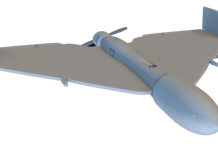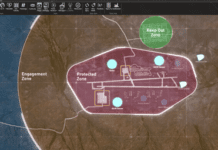This post is also available in:
 עברית (Hebrew)
עברית (Hebrew)
For security practitioners, it could seem impossible to catch everything that happens in wide, crowded spaces such as airports, stadiums and other large, public venues that require surveillance systems.
A new technology developed by the Department of Homeland Security (DHS) Science and Technology Directorate (S&T), the Immersive Imaging System, is a 360-degree, single-vantage-point surveillance capability. Funded by S&T and developed at the Massachusetts Institute of Technology Lincoln Laboratory, the innovative system could provide security practitioners with vastly greater imagery than any prior camera system, collecting visual data that is both clear and comprehensive.
Offering high-resolution images and 360-degree coverage, the system provides full scene situational awareness of areas of interest with rapid forensic capabilities and real-time actionable data analytics.
The technology provides a more continuous means of surveillance, especially in congested locations such as airport terminals, with thousands of people filtering through daily.
“Currently, there is a clear divide between monitoring pre-checkpoint, the checkpoint, and the secure area once passengers are cleared. In the future, we want to be able look at the whole process, from the curb to the checkpoint,” said John Fortune, S&T Program Manager.
“The Immersive Imaging System will enable situational awareness across an entire airport terminal.”
Moreover, many cameras today are pan-tilt and must be pointed directly at areas in need of surveillance, forcing operators to choose either a high-resolution view of a small area or a low-resolution, larger area view. The new platform transforms 360-degree surveillance by delivering a resolution sufficient to identify a person’s face at distances up to 100 meters in all directions simultaneously, adding a new layer of safety to high-impact locations.
Using up to 50 individual, high-resolution lenses, the system stitches the many perspectives into a single, continuous image. The system’s graphical user interface incorporates viewer software with detection and video processing algorithms, delivering a constant, all-encompassing feed, Fortune explained.
The platform allows multiple operators at once to scan and zoom across the whole 360-degree span digitally, selecting areas to designate for automated alerts as well as play back archived footage to review critical events.
Full-resolution footage can be stored and retrieved from the camera for up to 30 days, and image compression allows for efficient capture of data.
The system’s storage solution enables extremely high data rates, which further supports real-time surveillance, according to newswire.com..


























